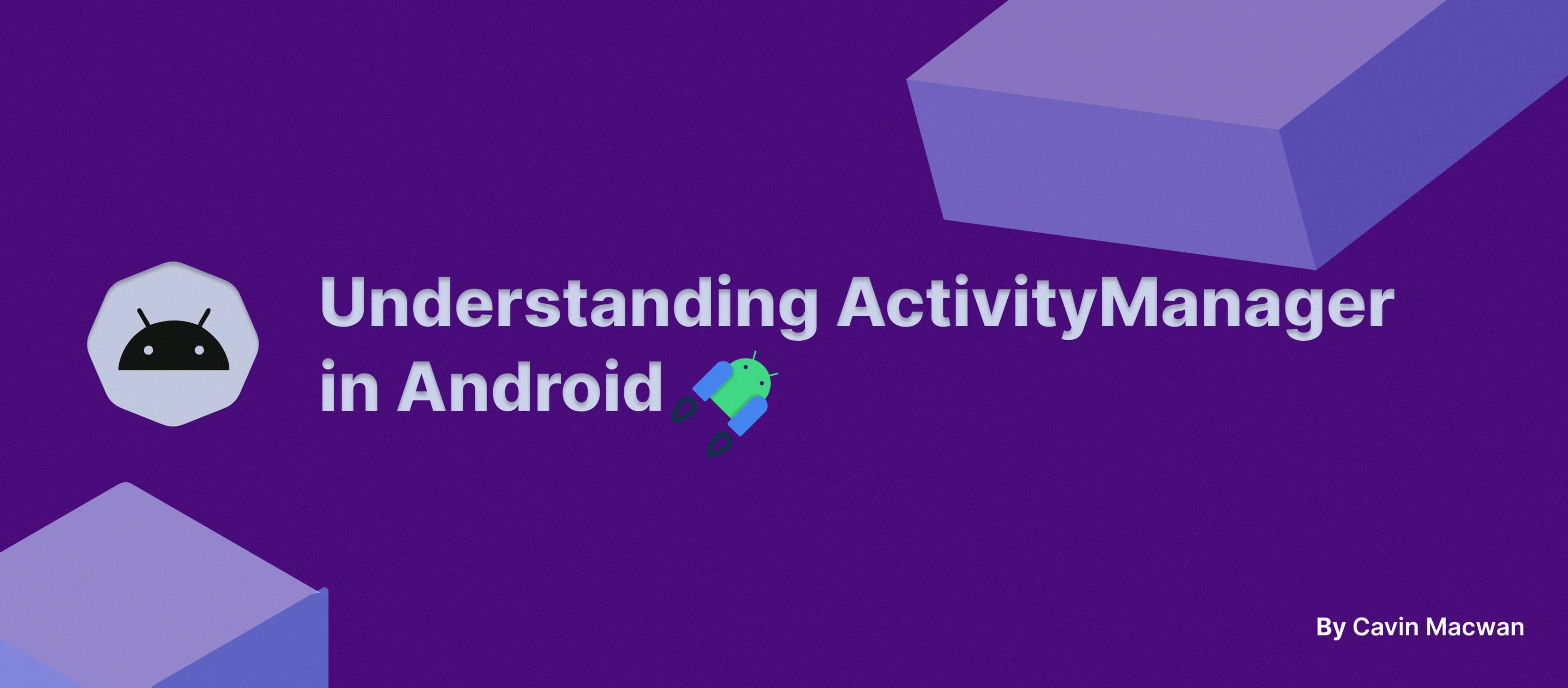You might have learned about a lot of system services like ConnectivityManager, PowerManager, NotificationManager
etc. Today, we'll look at one of the not widely known service, ActivityManager. So without further ado, let's get
started!
What is ActivityManager?
It's a system-level service that manages the activities, tasks and processes running on your device. This service
enables the developers to interact and control the aspects of the App lifecycle, memory usage and task management.
Here're some of the key functions of the ActivityManager:
- Task and Activity Information: The
ActivityManagercan retrieve the details of the running tasks (collection
of activities) along with their states. For example, whenever the user launches the App, the ActivityManager calls
the onCreate() method of the particular activity to display it on the screen.
- Process Management:
ActivityManageris responsible for starting new processes or services like foreground,
background and bound along with managing them. It also allows you to query the details about the running processes
and services.
- Memory Management: It provides the information about the memory usages across the system, including per-app
memory and system-wide memory states. You can use these methods to optimise the performance of your App by handling
the low-memory conditions.
But if this is such an important service, then why do only a few developers know about this? The answer is that many
developers don't need to interact with this service, but there are some pretty good use cases in which you might need
this service.
Let's look at some methods of this service in detail.
Some use-cases of ActivityManager:
isLowRamDevice(): This method checks weather the device is categorized as low-RAM or not. Based on this
function, you can optimize your App's resources for low-memory devices.
clearApplicationUserData(): As the name suggests, this will clear all the user-specific data associated with your
App, including files, databases and shared preferences. So if you're tired of manually clearing the App's data while
you're building the App, you can utilize this function.
getMemoryInfo(): This function will retrieve the memory information about the system, like available memory,
threshold memory and weather the device is in the low-memory state.
appNotResponding(): This will simulate ANR event for testing purposes. You can use this to understand your
App's behavior during ANR situations.
Let's see some sample usages on how you can utilize these functions:

Summary
ActivityManager is for system-level management, performance tuning and monitoring your App's behavior. While it's not
been used widely due to its specific functionalities, I hope I was able to give you some of the use-cases in which you
might need this service.
So in summary, ActivityManager is used for:
- Managing activity lifecycles and task stacks
- Allocating and freeing system resources
- Handling system events like crashes and ANRs
